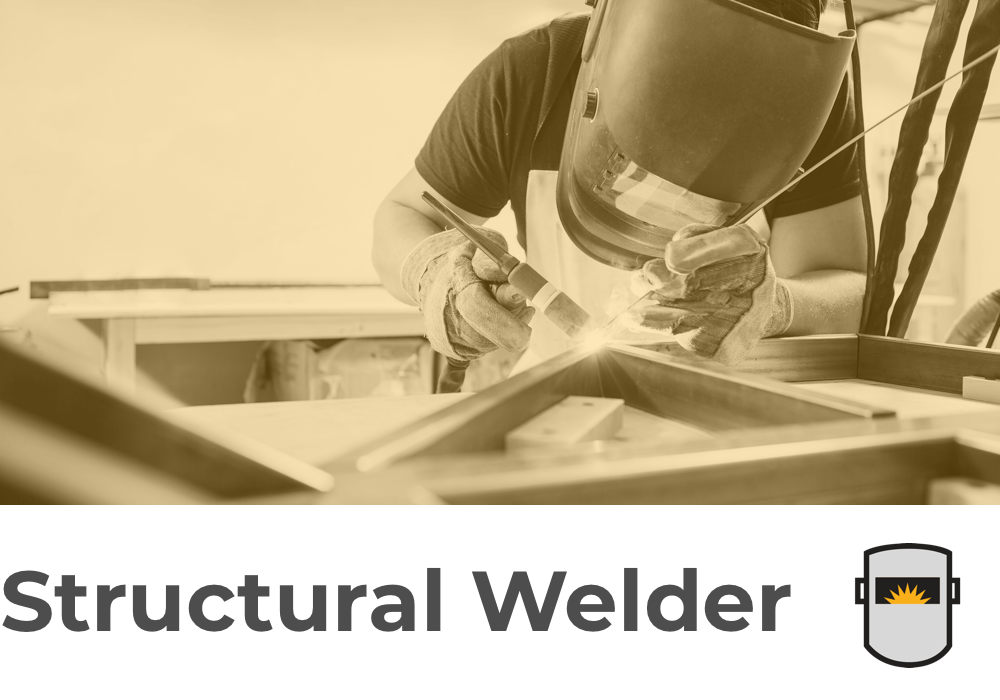Take the First Step Toward Your Welding Career Now!
Structural Welder

Just like humans need their skeleton system to support their bodies, so do buildings. Many large (and not so large) structures are supported by a skeletal metal frame put together by structural welders. Their expertise allows those supports to keep the building and anything inside of it from collapsing. From factories to power plants to commercial buildings, they’ve all had a structural welder’s touch. Learn how to get started in a structural welding career by reading on.
What A Structural Welder Does
When a structure needs repair work done to its frame, a structural welder gets involved. You’ll be a huge part of a construction team that's brought in to complete the mission of making the building great. What will your duties look like? Some common job requirements you’ll find on any of those sites like Glassdoor and Indeed are as follows:
- Follow best practices for personal and job site safety
- Be able to read and interpret blueprints or technical manuals
- Work with designers and team members to ensure precision
- Be able to lift at least 50 pounds
- Be familiar with and proficiently use all relevant tools
- Must be OK with heights
- Can use oxygen and propane torches
- Know how to calculate measurements
- Have experience with multiple types of welding beyond TIG and MIG
- Have good arm/hand steadiness
- Lay out and fabricate structural steel or sheet metal to build structures
The full spectrum of your duties may differ depending on where you work.
How To Become A Structural Welder
There is no straight line toward a structural welding career. Apprenticeships through welding or construction unions are the most popular. If you want to become a structural welder, then you’d follow a similar path as a traditional welder:
- Get your high school diploma or GED.
- Choose between trade school, community college, the military, or an apprenticeship.
- Even when you choose to go the more traditional educational path, you’ll still end up receiving hands-on training from your employer.
- Get your certification through the American Welding Society.
In most instances, you’ll get an entry-level job where you’ll be trained to suit the needs of the type of industry you’re working in. There are also programs available, once you’ve completed your welding education, that are specific to structural welding.
Another way to become a structural welder is to become an ironworker:
- Have your high school diploma or GED.
- Go through an apprenticeship which takes 3-4 years. There will be 144 hours of instruction plus 2,000 hours of paid on-the-job training for each year of your apprenticeship.
- Unions and contractor associations sponsor these apprenticeships.
Pay And Job Outlook
Structural welder salaries range depending on what state you’re in, the amount of experience you have, and the industry you’re working in.
The Bureau of Labor Statistics reports the average annual pay for structural welders in 2023 was $68,220 a year, with the top 10 percent earning $105,010.
If you are a certified welder, and are physically capable of doing the work, then you're likely to find some great job opportunities for yourself.